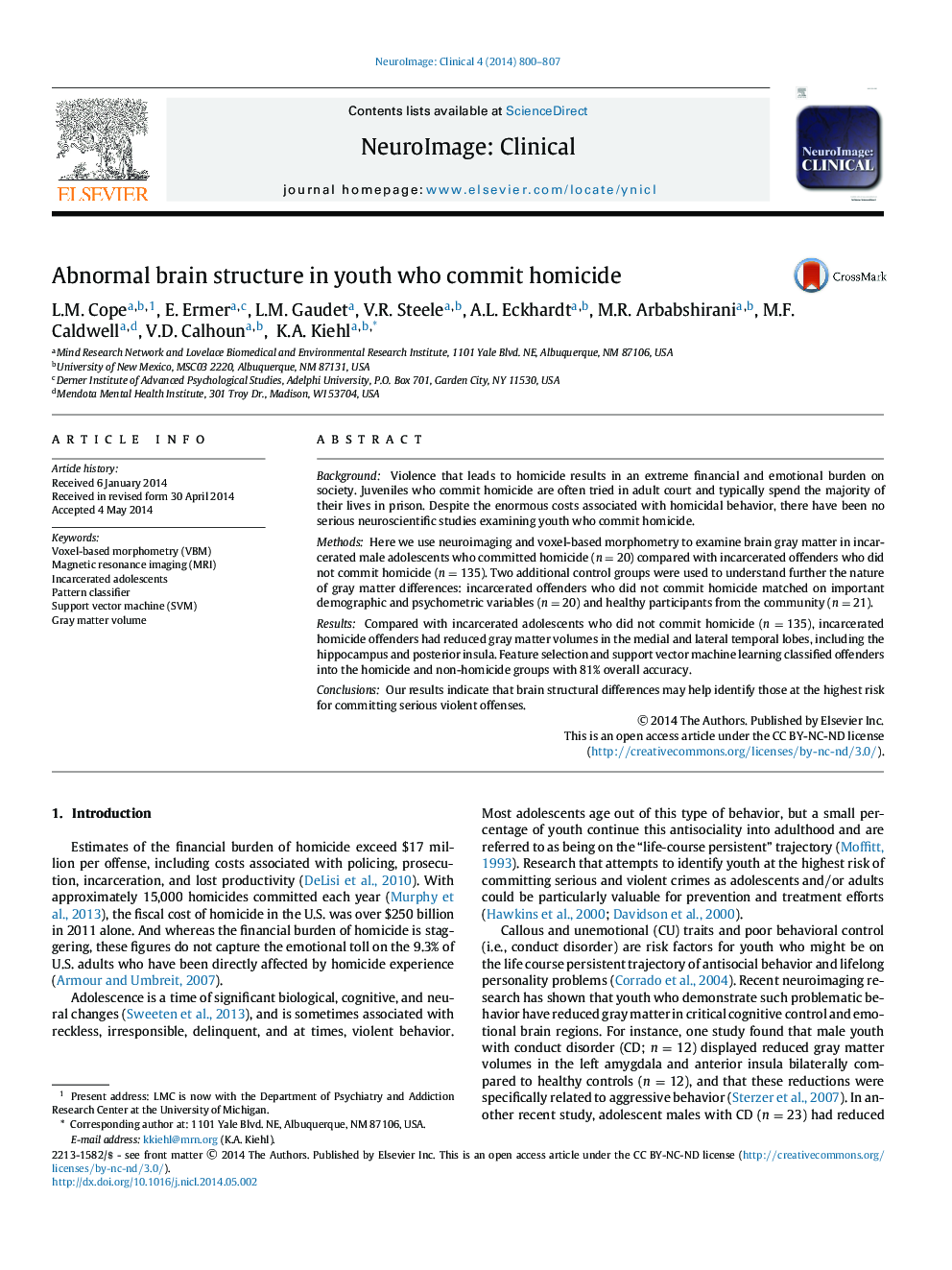| Article ID | Journal | Published Year | Pages | File Type |
|---|---|---|---|---|
| 3075362 | NeuroImage: Clinical | 2014 | 8 Pages |
•Homicide offenders had reduced gray matter volumes in medial/lateral temporal lobes.•Specific areas of reduction included the hippocampus and posterior insula.•Support vector machine learning classified offenders with 81% overall accuracy.
BackgroundViolence that leads to homicide results in an extreme financial and emotional burden on society. Juveniles who commit homicide are often tried in adult court and typically spend the majority of their lives in prison. Despite the enormous costs associated with homicidal behavior, there have been no serious neuroscientific studies examining youth who commit homicide.MethodsHere we use neuroimaging and voxel-based morphometry to examine brain gray matter in incarcerated male adolescents who committed homicide (n = 20) compared with incarcerated offenders who did not commit homicide (n = 135). Two additional control groups were used to understand further the nature of gray matter differences: incarcerated offenders who did not commit homicide matched on important demographic and psychometric variables (n = 20) and healthy participants from the community (n = 21).ResultsCompared with incarcerated adolescents who did not commit homicide (n = 135), incarcerated homicide offenders had reduced gray matter volumes in the medial and lateral temporal lobes, including the hippocampus and posterior insula. Feature selection and support vector machine learning classified offenders into the homicide and non-homicide groups with 81% overall accuracy.ConclusionsOur results indicate that brain structural differences may help identify those at the highest risk for committing serious violent offenses.
